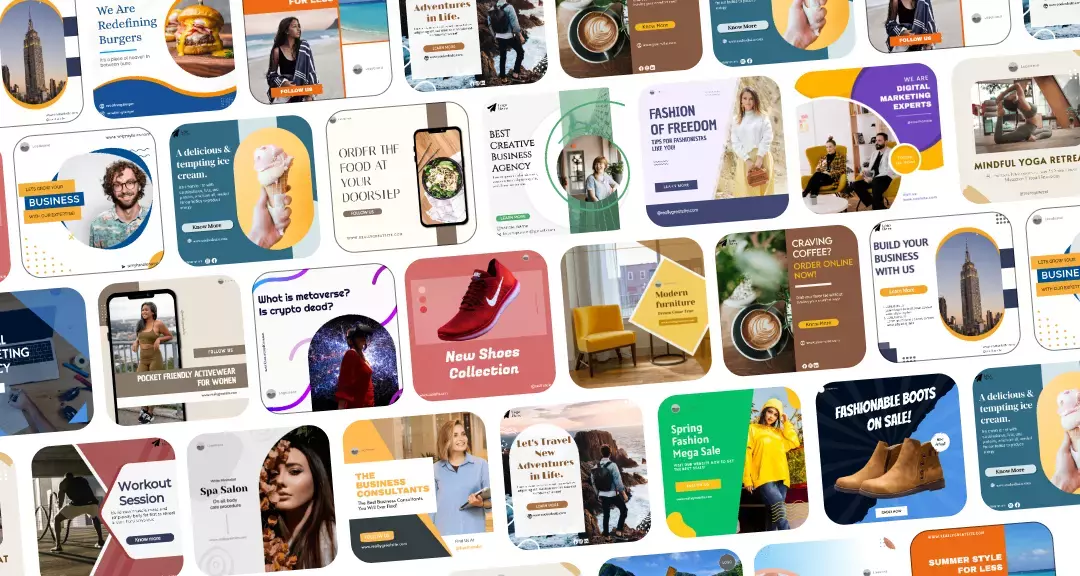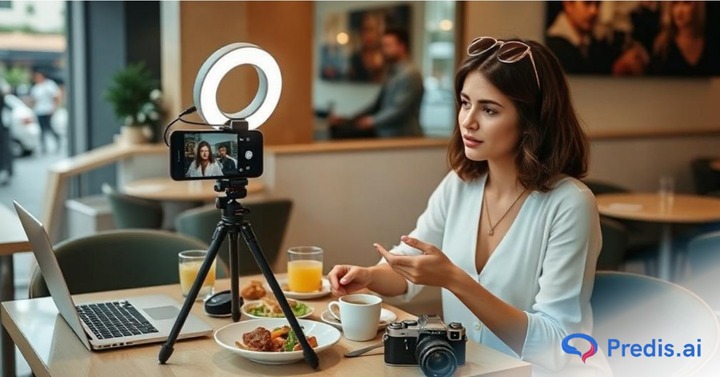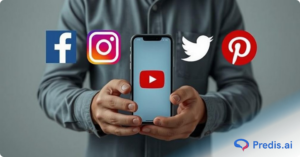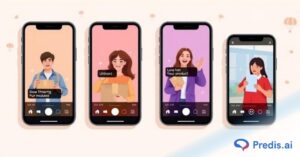The digital landscape has fundamentally changed how we consume content, giving rise to a new professional class: the digital creator. This is not a fleeting trend, it is a global economic force. With over 50 million people worldwide identifying as digital creators and the creator economy surpassing a valuation of $100 billion, the question is no longer if this is a viable career path, but how to successfully navigate it. Yet, the road to turning passion into profit is often murky, clouded by buzzwords and a flood of generic advice.
This comprehensive guide cuts through the noise. We will provide a definitive answer to the question, “What is a digital creator?”, clearly outlining the role, their unique intent, and how they differ from traditional influencers and content marketers. More importantly, this blog will serve as your detailed roadmap, providing the strategic steps you need to carve out your niche, master the necessary technical and business skills, and explore the proven monetization strategies that can transform your creative drive into a sustainable online empire.
TL;DR 🖋
A digital creator produces original, engaging content (video, blogs, art) to build an online community and add value (educate/entertain). They focus on the content itself, unlike an influencer who primarily focuses on reach.
- Step 1: Find Your Niche and Expertise
- Step 2: Develop a Strategic Content Plan and Set Goals
- Step 3: Master Your Tools and Invest in Quality
- Step 4: Build a Multi-Platform Presence
- Step 5: Engage, Network, and Build Your Community
- Step 6: Educate Yourself and Stay Adaptable
What Is A Digital Creator?
A digital creator is someone who creates and publishes content on the internet. This content can be of any type – a blog post, a social media post, a YouTube video, a simple tweet, a picture on Instagram, or a post on Facebook.
Digital creators play a vital role in our interaction with technology. Without them, many of our beloved apps such as Instagram, YouTube, Facebook, or LinkedIn would lack the engaging content that defines them.
What Is a Digital Creator?
The rise of the internet has birthed a new media professional. If you’ve been asking what is a digital creator, the answer lies in the intersection of art, technology, and entrepreneurship. A digital creator is a professional who lives and breathes online, building a career by consistently generating original, compelling content.
The Core Role: Creation, Production, and Sharing
A digital creator is fundamentally an individual who produces and publishes original, engaging digital content such as writing, photography, video, or audio across various online platforms to build a consistent audience or community.
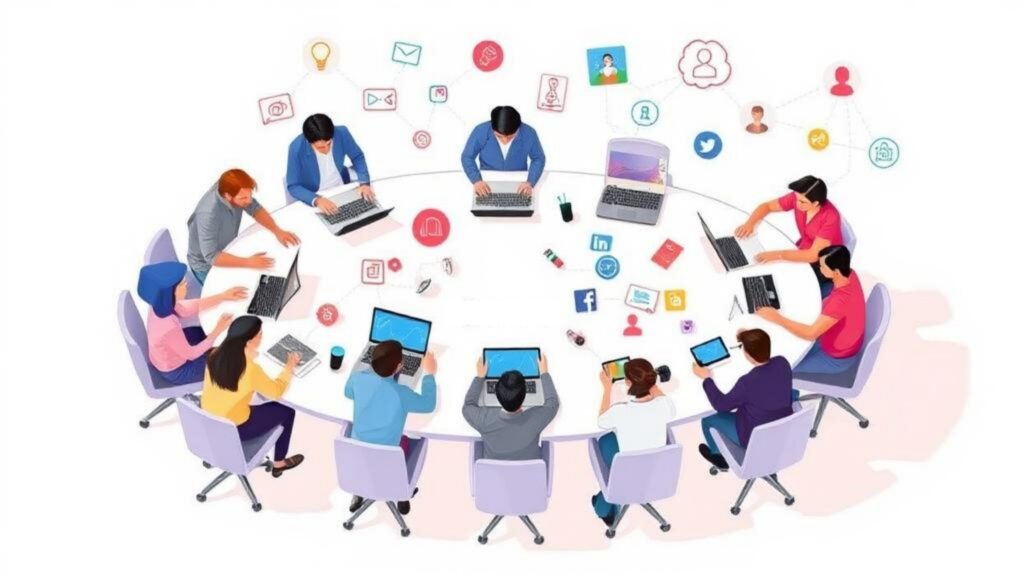
They are the engine of the modern internet. Their role encompasses a full production lifecycle:
- Ideation: Brainstorming unique and valuable concepts.
- Production: Capturing, editing, and designing the media (e.g., filming a YouTube video, writing a detailed blog post, designing a graphic).
- Distribution: Strategically publishing their work across platforms like YouTube, TikTok, Instagram, or a personal website.
- Community Building: Engaging with followers to foster a loyal, dedicated audience.
Digital Creator vs. Influencer: Understanding the Intent
While these terms often overlap in casual conversation, understanding the intent behind each role is key to answering what is a digital creator in the context of the creator economy.
| Role | Primary Focus | Main Goal | Monetization Strategy |
| Digital Creator | The Content itself (Storytelling, craftsmanship, niche expertise). | To Add Value by teaching, entertaining, or inspiring | Selling digital products, memberships, ad revenue. |
| Influencer | Personality and Reach (Audience size and authority) | To Influence consumer purchasing behavior | Promoting products, driving sales, sponsored posts. |
- Creator Focus: A creator’s first thought is, “What kind of valuable content can I make today?” They build a community around their unique output.
- Influencer Focus: An influencer’s primary leverage is their audience’s attention and trust, which they monetize by driving sales for brands. Creators can become influencers, but the core distinction lies in whether their main currency is their content or their power to persuade.
Digital Creator vs. Content Creator: Is There a Difference?
The terms digital creator and content creator are largely used interchangeably in the modern lexicon. For most practical purposes, they describe the same job.
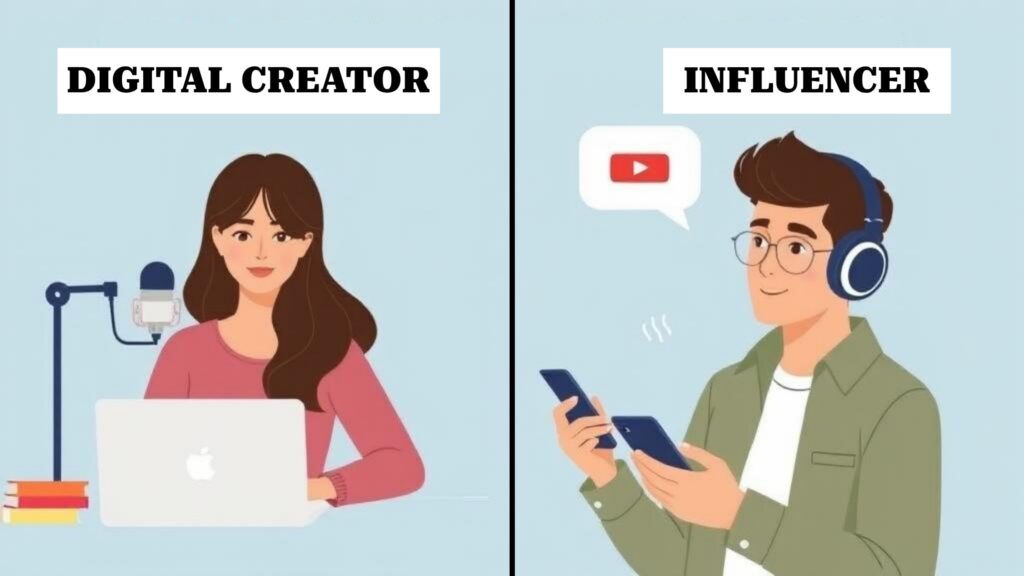
However, a subtle, historical distinction exists:
- Content Creator: A broader term that encompasses anyone who creates media, whether digital or traditional (e.g., a copywriter for a newspaper ad, a photographer for a print magazine, or a social media manager).
- Digital Creator: Specifically refers to someone whose work is designed exclusively for the online space. They leverage digital tools and internet-native platforms (YouTube, TikTok, blogs, etc.) to reach their audience, making them pure players in the digital world.
What Types of Content Do Digital Creators Make?
To truly grasp what is a digital creator, you must understand the sheer breadth of media they produce. Unlike professionals of the past who were locked into a single medium (like a print columnist or a television producer), the modern digital creator is a multi-platform artist, often leveraging several content formats to engage diverse segments of their audience.

Visual & Design Content
Visual content is the bedrock of platform engagement, driven by the highly visual nature of social media feeds and mobile viewing habits. This category includes content where the primary communication tool is sight.
- Photography (Instagram, Pinterest): This spans everything from professional-grade travel and product photography to daily lifestyle snaps. Creators often specialize in aesthetics (e.g., minimalist food photography or vibrant fashion lookbooks) and use platforms like Instagram and Pinterest to create highly curated visual stories.
- Graphic Design, Memes, Infographics: These creators specialize in compressing complex information or delivering quick humor. Infographics help educate audiences quickly, while well-crafted memes and graphical templates (used on platforms like LinkedIn or X/Twitter) are highly shareable, boosting reach and visibility.
- Digital Art (including NFTs/Digitized Art): This includes illustrations, motion graphics, 3D renderings, and abstract digital paintings. These creators use platforms like ArtStation or Behance, and increasingly, leverage blockchain technology to sell unique ownership of their works as Non-Fungible Tokens (NFTs).
Video & Audio Content
The shift to video and audio consumption has made these formats essential for any successful digital creator. These are the formats best suited for building deep, personal connections with an audience.
- Long-form Video (YouTube, e-courses, webinars): This content is typically 8 minutes or longer and is optimized for deep dives, tutorials, documentaries, reviews, or educational series. YouTube remains the premier platform for long-form video, providing robust monetization options through advertising and memberships.
- Short-form Video (TikTok, Reels, Shorts): Characterized by quick pacing, music, and high engagement rates, short-form video is designed to capture attention instantly. Creators use these platforms (TikTok, Instagram Reels, YouTube Shorts) primarily for discovery, trend participation, and delivering bite-sized entertainment or tips.
- Audio (Podcasts, Music, Sound Effects): Podcasts allow creators to tackle complex topics through long-form discussion or narrative storytelling, fitting perfectly into commutes and workouts. Musicians and sound designers also fall into this category, generating content for platforms like Spotify, Apple Music, or Bandcamp.
- Livestreams (Twitch, YouTube Live): Livestreaming is the most immediate form of content, fostering real-time interaction, Q&A sessions, and communal experiences. Gamers dominate platforms like Twitch, but creators also use live sessions for coding demos, cooking classes, or virtual concerts.
Written & Long-Form Content
Despite the video boom, written content remains indispensable for building authority, driving Search Engine Optimization (SEO), and deepening subscriber relationships.
- Blog Posts and Articles: This is the foundation of many creators’ careers. Blogs allow for nuanced explanation, detailed guides, and highly specific niche content that appeals to search engines and dedicated readers. The combination of strong written content and visual media is a hallmark of the sophisticated digital creator. Accessible content helps all readers, including people with disabilities, engage with your blogs comfortably and without barriers.
- E-books, Guides, and White Papers: These formats are often used as lead magnets (free downloads to collect email addresses) or as premium products for sale. They represent the creator’s specialized knowledge packaged into a comprehensive, valuable resource.
- Newsletters and Email Sequences: The email list is a creator’s most valuable asset, offering a direct line of communication free from platform algorithm changes. Newsletters are used to deliver exclusive content, early access to products, or curated links, turning followers into dedicated community members.
How to Become a Digital Creator?
The journey to becoming a successful digital creator is a marathon, not a sprint. It requires blending your creative energy with a strategic, entrepreneurial mindset. Follow this detailed roadmap to build a sustainable career in the creator economy.
Step 1: Find Your Niche and Expertise
The digital space is crowded. To attract and retain a loyal audience, you cannot afford to be generic. Your first, most critical task is to define your niche—the “sweet spot” where your passion, deep expertise, and audience interest intersect.
- Advice for Selection: Don’t just pick a broad topic like “fitness.” Drill down until you find a specific problem you are uniquely qualified to solve. This laser focus allows you to establish authority faster.
- Actionable Example: Instead of “cooking,” which is saturated, narrow it down to “vegan cooking for busy college students” (solves a specific pain point) or “mastering classic French pastry techniques” (deep expertise).
- Research: Analyze what your potential competitors are not covering. What unique perspective or voice can you bring to a subject? Your niche is your competitive advantage.
Step 2: Develop a Strategic Content Plan and Set Goals
Creativity must be grounded in a strategy. Successful creators operate like media companies, planning their output meticulously to ensure consistency and impact.
- Strategy: The Editorial Calendar: Outline a clear plan detailing your content types, posting frequency, and specific platforms for each piece. This calendar ensures you hit your publishing targets and never face a sudden creative block.
- Goals: The SMART Framework: Define clear, measurable objectives to track your progress. Goals should be Specific, Measurable, Achievable, Relevant, and Time-bound.
- Example Goal: “Reach 1,000 YouTube subscribers and launch my first digital product (e-book) within the next six months.”
- Consistency is Key: Platform algorithms reward regular activity. Establish a reliable publishing schedule (e.g., a new podcast every Tuesday, three short videos per week) so your audience knows exactly when to expect your new material.
Step 3: Master Your Tools and Invest in Quality
While the message is paramount, the quality of delivery directly impacts audience trust and retention. Mediocre production quality can signal a lack of professionalism.
- Equipment: Starting Smart and Scaling Up: You absolutely can start with your smartphone for filming and recording. As you begin to earn, strategically upgrade your kit:
- Audio: A quality external microphone is often more important than a camera.
- Lighting: Basic ring lights or softboxes drastically improve video professionalism.
- Camera: Upgrade to a dedicated mirrorless camera once you’ve proven the viability of your channel.
- Software: The Digital Toolkit: Become proficient in the tools necessary for your chosen medium:
- Video: Adobe Premiere Pro, Final Cut Pro, or DaVinci Resolve.
- Design: Canva (for quick social graphics), Adobe Creative Cloud (for professional art/photo editing).
- Audio: Audacity or Adobe Audition.
- Quality Focus: The goal is high-quality content that is visually appealing, informative, entertaining, and ultimately, valuable to your audience. This quality is fundamental for attracting and retaining an audience and securing brand deals later on.
Step 4: Build a Multi-Platform Presence
A successful digital creator avoids putting all their eggs in one platform basket. Diversification protects you from algorithm changes and allows you to capture different audience segments.
- Platform Research: Research where your target audience is most active and tailor your content to the platform’s native style.
- TikTok/Reels: Best for short-form, rapid-fire entertainment and quick tips.
- YouTube: Ideal for long-form educational or review content that drives passive traffic.
- Email Newsletter/Blog: Serves as your content “home base,” which you own completely.
- Branding: Maintain a consistent username, logo, and visual brand identity across all channels. This makes it easy for followers to recognize and find you everywhere, reinforcing your personal brand.
Step 5: Engage, Network, and Build Your Community
The creator economy is also the community economy. The depth of your relationship with your audience is what translates to long-term income and loyalty.
- Engagement is a Two-Way Street: Actively respond to comments (especially in the first hour of posting), host frequent Q&A sessions, and solicit feedback. This fosters a sense of belonging and validates your audience.
- Networking: Connect with other creators, especially those in adjacent or complementary niches.
- Collaboration: Working together on a video or podcast episode exposes you to their audience, allowing you to expand your reach authentically.
- Learning: Networking provides mentors and peers who can offer advice and support.
Step 6: Educate Yourself and Stay Adaptable
The digital world evolves at breakneck speed. What worked last year might be obsolete today. A commitment to continuous learning is non-negotiable for a professional digital creator.
- Continuous Learning: Dedicate time each week to honing technical skills. Learn the basics of SEO (Search Engine Optimization) to help your content rank, master new features on publishing platforms, and study your analytics.
- Adaptation is Survival: Be open to constructive criticism, analyze what’s performing well, and be ready to pivot your strategy. Understanding how to ethically leverage emerging tools (like generative AI) or exploring generative engine optimization services can help you stay ahead of shifting content discovery patterns. The faster you adapt to new trends, the easier it becomes to keep your content relevant and competitive.
Monetization Strategies For A Digital Creator
The ultimate goal of defining what is a digital creator is understanding how they transform passion and content into a stable income. The most successful creators build a diverse portfolio of revenue streams, creating a financial safety net that insulates them from relying on any single platform or income source.
Direct Audience Support (Membership & Merch)
This is the most personal and reliable form of income because it comes directly from your most loyal fans, often bypassing volatile platform fees and ad metrics. This is revenue based on loyalty and emotional investment.
- Exclusive Content/Memberships (Patreon, platform subscriptions): Platforms like Patreon, Substack, and YouTube’s Channel Memberships allow fans (often called “patrons”) to pay a recurring monthly fee for special access. This is a powerful revenue stream: a 2022 survey found that creators often make over 40% of their total income from platforms like Patreon.
- Value Proposition: Memberships should offer true value, such as behind-the-scenes content, private community forums (Discord, Slack), early access to videos, or monthly private Q&A sessions.
- Tip: Creators who promote their membership offerings daily or weekly often see significantly higher earnings.
- Selling Merchandise/Physical Goods: Branded merchandise (t-shirts, mugs, stickers, personalized prints) allows fans to physically show support for the creator’s brand.
- Execution: Most creators use print-on-demand (POD) services (like Printful or Teespring) to eliminate inventory risk and handle logistics, allowing them to focus purely on design and promotion
Performance-Based Revenue (Ads & Affiliate Marketing)
This income stream is derived from audience scale and traffic volume. It is often the entry point for monetization but can be inconsistent due to fluctuations in ad rates and algorithm changes.
- Ad Revenue (YouTube Ads, website ads): Platforms with large traffic capacity (like YouTube or high-traffic blogs using networks like Google AdSense or Mediavine) share a portion of the advertising revenue generated when a viewer watches or clicks an ad.
- Scale Requirement: This stream requires significant, consistent traffic to become profitable. For instance, YouTube generally pays an average of $3.00 to $5.00 per 1,000 monetized views (CPM/RPM), meaning you need hundreds of thousands of views monthly for a livable wage.
- Affiliate Marketing (earning a commission on product sales using unique links): A creator recommends a product or service and earns a commission whenever a follower purchases that item using a unique tracking link.
- Requirement: Trust: This method relies heavily on the audience’s trust. The creator must only recommend products that are genuinely useful and align with their content to maintain credibility.
- Common Platforms: Amazon Associates is the largest, but niche-specific affiliate networks (for software, beauty, or gaming gear) often offer higher commission rates.
Selling Your Expertise (Digital Products & Sponsorships)
These represent the highest-margin, most scalable, and often most lucrative income sources. They monetize a creator’s authority and specialized knowledge.
- E-courses, Templates, E-books, and Digital Downloads: Selling digital products allows the creator to make money while they sleep. You create the product once, and sell it an infinite number of times with no inventory cost.
- Examples: A photographer sells Lightroom presets; a coder sells custom website templates; a financial analyst sells a personal budgeting spreadsheet. This is the definition of selling your expertise, making it a key component of what is a digital creator’s business model.
- Brand Partnerships and Sponsored Content (negotiating retainers/fees): This is where brands pay the creator a fixed fee to integrate a product or message into their content (e.g., a dedicated sponsored video, a blog post, or a series of Instagram Stories).
- High Value: Sponsorships can be highly lucrative because the creator charges based on their engagement rate, niche authority, and production quality, not just views.
- Negotiation: Successful creators negotiate rates based on their value, ensuring the brand and the creator share a target audience and the promotion feels authentic. Transparency is crucial—the audience must always be informed that the content is sponsored.
- Micro-Influencer Power: Even smaller creators (10k–100k followers) with highly engaged niche audiences are valuable targets for brands seeking high conversion rates.
Conclusion: Your Journey as a Digital Creator Starts Now
We’ve answered the question, what is a digital creator? they are the multimedia entrepreneurs who build businesses and communities by producing valuable, original content online. The path to becoming one isn’t about luck; it’s about a deliberate process built on a few core pillars:
First, find your niche and expertise. Don’t try to appeal to everyone; focus on serving a specific audience with unique knowledge or entertainment only you can provide. Second, commit to creating quality content consistently, mastering the tools of your chosen medium, be it video, audio, or long-form writing. Third, engage your community passionately. Your audience is your biggest asset, and fostering loyalty is what ultimately drives support. Finally, monetize strategically, diversifying your income across direct sales (products/merch), audience support (memberships), and external revenue (sponsorships/ads).
The future of media belongs to the creators. The hardest part of the journey is simply starting. The time for planning is over. Grab your phone and film yo
Why Should You Become A Digital Creator?
1. Creative expression
Everyone wants to express their ideas and thoughts creatively and share them with the world. This could be anything from your take on life or that dreamy adventure you’ve been planning.
Digital creation provides a platform for you to express your creativity and share your unique perspectives with the world.
Whatever it is that you’re passionate about, it allows you to unleash your creativity and produce content that reflects your interests and talents.
Express your creativity while leveraging AI by using Predis.ai's social media content generator!
2. Flexibility and freedom
The most important benefit of becoming a digital creator is the freedom to work from wherever and whenever you want. You aren’t bound by time, and you do not need to catch a bus to an office every morning.
Need a break? Take it whenever the mood strikes. This freedom allows you to pursue your passion while maintaining a healthy work-life balance.
Whether you’re a full-time digital creator or balancing it with other commitments, the flexibility of this career path enables you to tailor your work to fit your lifestyle.

3. Community and connection
Building a community around your content lets you connect with like-minded individuals who share your interests and passions.
Through comments, messages, and collaborations, you can engage with your audience on a personal level, foster meaningful relationships, and create a supportive community around your content.
4. Monetization opportunities
There are tons of ways you can monetize your skills and content as a digital content creator.
These include advertising, sponsored partnerships, affiliate marketing, merchandise sales, subscriptions, and crowdfunding.
By leveraging these monetization strategies, you can turn your passion into a sustainable income stream and potentially even build a lucrative career as a digital creator.
5. Simply because it is in demand
With the increasing prevalence of the internet and digital technologies, consumers are increasingly turning to digital platforms for entertainment, information, education, and communication.
This has created a significant demand for digital content in various forms, including articles, videos, podcasts, e-books, online courses, social media content, and more.
You could also choose to work for a company that puts up content online regularly. Such careers are one of the most lucrative in the world.
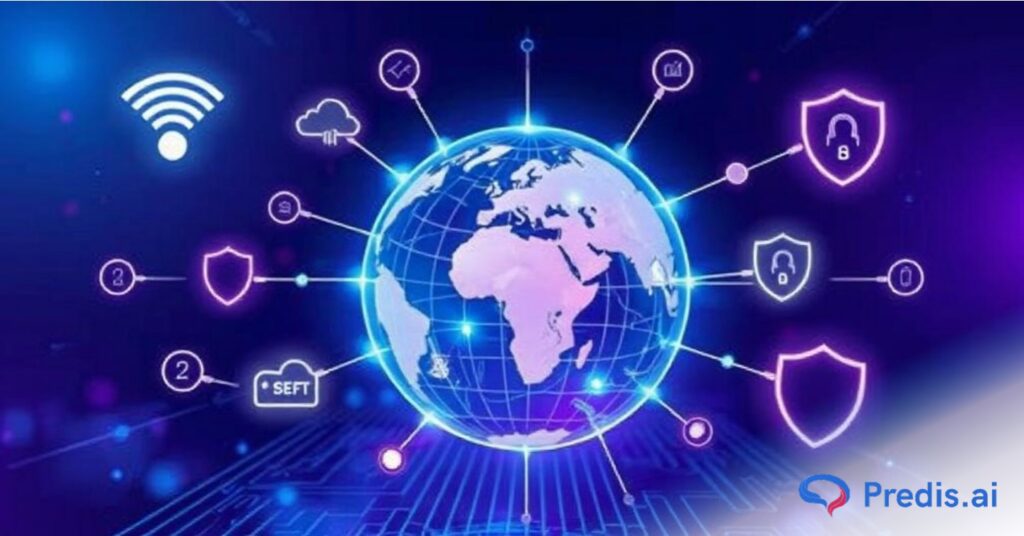
What Is The Average Salary Of A Digital Creator In 2024?
According to Salary.com, as of February 26, 2024, the typical salary for digital content creators hovers around $51,003.
However, the salary spectrum typically spans from $48,780 to $54,697, contingent upon various factors. These factors include educational background, certifications, supplementary skills, and years of professional experience.
What Types of Content Do Digital Creators Make?
To truly grasp what is a digital creator, you must understand the sheer breadth of media they produce. Unlike professionals of the past who were locked into a single medium (like a print columnist or a television producer), the modern digital creator is a multi-platform artist, often leveraging several content formats to engage diverse segments of their audience.

Visual & Design Content
Visual content is the bedrock of platform engagement, driven by the highly visual nature of social media feeds and mobile viewing habits. This category includes content where the primary communication tool is sight.
- Photography (Instagram, Pinterest): This spans everything from professional-grade travel and product photography to daily lifestyle snaps. Creators often specialize in aesthetics (e.g., minimalist food photography or vibrant fashion lookbooks) and use platforms like Instagram and Pinterest to create highly curated visual stories.
- Graphic Design, Memes, Infographics: These creators specialize in compressing complex information or delivering quick humor. Infographics help educate audiences quickly, while well-crafted memes and graphical templates (used on platforms like LinkedIn or X/Twitter) are highly shareable, boosting reach and visibility.
- Digital Art (including NFTs/Digitized Art): This includes illustrations, motion graphics, 3D renderings, and abstract digital paintings. These creators use platforms like ArtStation or Behance, and increasingly, leverage blockchain technology to sell unique ownership of their works as Non-Fungible Tokens (NFTs).
Video & Audio Content
The shift to video and audio consumption has made these formats essential for any successful digital creator. These are the formats best suited for building deep, personal connections with an audience.
- Long-form Video (YouTube, e-courses, webinars): This content is typically 8 minutes or longer and is optimized for deep dives, tutorials, documentaries, reviews, or educational series. YouTube remains the premier platform for long-form video, providing robust monetization options through advertising and memberships.
- Short-form Video (TikTok, Reels, Shorts): Characterized by quick pacing, music, and high engagement rates, short-form video is designed to capture attention instantly. Creators use these platforms (TikTok, Instagram Reels, YouTube Shorts) primarily for discovery, trend participation, and delivering bite-sized entertainment or tips.
- Audio (Podcasts, Music, Sound Effects): Podcasts allow creators to tackle complex topics through long-form discussion or narrative storytelling, fitting perfectly into commutes and workouts. Musicians and sound designers also fall into this category, generating content for platforms like Spotify, Apple Music, or Bandcamp.
- Livestreams (Twitch, YouTube Live): Livestreaming is the most immediate form of content, fostering real-time interaction, Q&A sessions, and communal experiences. Gamers dominate platforms like Twitch, but creators also use live sessions for coding demos, cooking classes, or virtual concerts.
Written & Long-Form Content
Despite the video boom, written content remains indispensable for building authority, driving Search Engine Optimization (SEO), and deepening subscriber relationships.
- Blog Posts and Articles: This is the foundation of many creators’ careers. Blogs allow for nuanced explanation, detailed guides, and highly specific niche content that appeals to search engines and dedicated readers. The combination of strong written content and visual media is a hallmark of the sophisticated digital creator.
- E-books, Guides, and White Papers: These formats are often used as lead magnets (free downloads to collect email addresses) or as premium products for sale. They represent the creator’s specialized knowledge packaged into a comprehensive, valuable resource.
- Newsletters and Email Sequences: The email list is a creator’s most valuable asset, offering a direct line of communication free from platform algorithm changes. Newsletters are used to deliver exclusive content, early access to products, or curated links, turning followers into dedicated community members.
How To Be A Digital Creator In 2024?
1. Choose A Niche (Or Interest)
Determine what type of content you want to create and what interests you the most. This could be anything from cooking, fashion, gaming, technology, lifestyle, or even a unique combination of multiple niches.
{Insert Image with caption: Turn your passion for cooking into a means of expressing your creativity and connecting with the cooking community by sharing your recipes on a YouTube channel}
Making content about what you love or what interests you will always translate into a highly successful digital career.
2. Develop Your Skills
No one is born talented. You need to perfect the art that you’ve chosen. Invest time in honing your skills related to your chosen niche.
Whether it’s photography, video editing, graphic design, writing, or any other skill required for creating digital content, continuous improvement is key.
3. Choose Your Platforms
Decide which digital platforms align best with your content and target audience. Popular platforms for digital creators include YouTube, Instagram, TikTok, Twitch, blogs, podcasts, and more.
- It greatly depends on the type of content you want to publish. While TikTok and YouTube are good for videos, Behance and Pinterest are good options for designers.
- Additionally, keep in mind the monetization opportunities each platform offers. After all, you are doing what you are doing for money.
- An important thing is to spread your content over several platforms. An average full-time content creator uses 3/4 platforms for creating and publishing content. Posting on platforms besides your primary one will add to your influence and help you build a larger community.
4. Create High-Quality Content Consistently
The most important and certainly the hardest part is creating content. Don’t worry if you look at your very first pieces of content and can’t lift your head from embarrassment. It happens to the best of us.
It takes time to master content creation. However, when you have invested enough time, you will find you’ve emerged as a great creator.
Try out various formats, styles, and topics to discover what resonates most with both you and your audience.
Consistently producing high-quality is the key. You don’t want your fans and followers to forget about you, do you?
{Predis code CTA}
5. Build Your Brand
Develop a unique brand identity that reflects your personality and resonates with your audience.
This includes creating a recognizable logo, color scheme, and consistent branding across all your platforms.
6. Engage With Your Audience
Interact with your audience regularly by responding to comments and messages, and engaging in discussions.
Building a strong connection with your audience is essential for fostering loyalty and growing your fan base.
Plus, social platforms boost content that is engaged and interacted with.
7. Collaborate With Others
Collaborate with other digital creators within your niche or related niches. Collaborations can help you reach new audiences and provide opportunities for cross-promotion.
8. Monetize Your Content
The ultimate goal of a content creator is to monetize their content. There are multiple ways to earn money as a digital creator.
These are:
- Ad revenue: Money earned from people watching ads displayed over your content
- Affiliate marketing: Commission earned when people buy from your special referral link for a product
- Merchandise sale: When you are big enough, you can launch your merchandise.
- Collaborations with brands earn you huge money in the form of endorsements.
- Sponsored content: Where brands pay you for showcasing them in your content.
- Subscriptions: Charging money from your fans or audience to view your content.
It is always advisable to maintain multiple sources of revenue rather than relying on a single one.
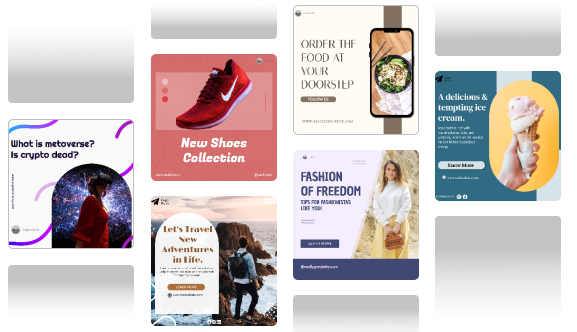
How To Become A Facebook Digital Creator
Facebook offers you a lucrative opportunity to become a digital creator on the platform. It lets you turn on professional mode for your Facebook profile.
Turning on Facebook Professional Mode
Follow this simple process to turn on Professional Mode for your profile:
- Go to your Facebook profile.
- Click or tap the menu button (…) on the right side below your profile header and tap on Turn on professional mode.
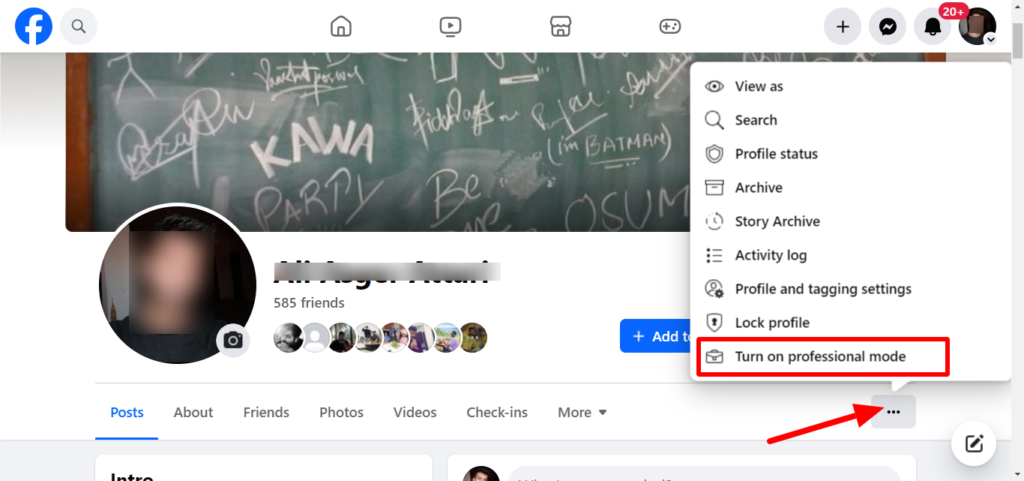
- To confirm, click or tap Turn on and complete the flow.
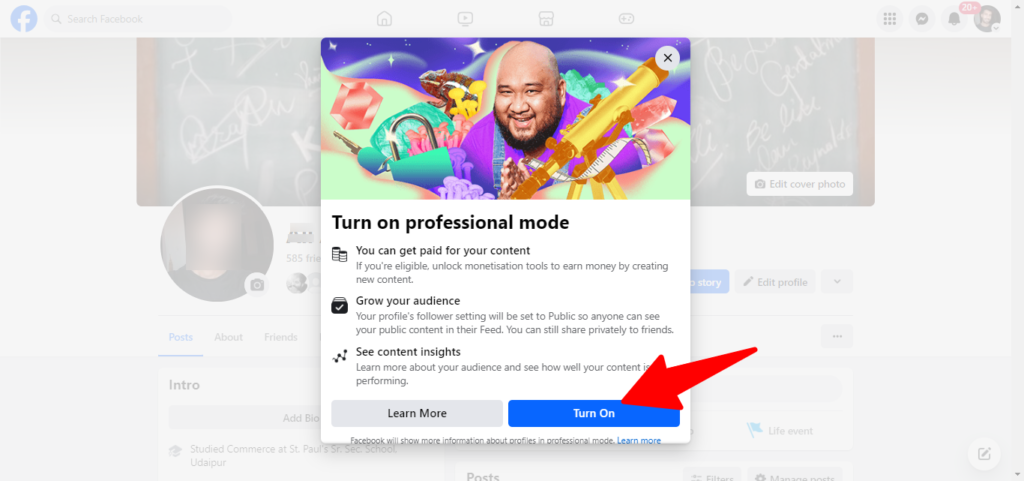
Turning Professional Mode on for your profile lets you enjoy all the tools and features useful for being a digital creator on Facebook.
Features Of The Facebook Professional Mode
Here are some of the cool features of Facebook’s Professional Mode:
- The Professional Mode feature on Facebook enables users to craft Reels with ease. It allows for the seamless selection of multiple clips, provides the option to save a reel in progress as a draft, and extends the reel length to 60 seconds.
- The Reels Play Bonus Program allows creators to earn money from the views on their qualifying reels.
- Upon activating Professional Mode for your profile, individuals can follow you and view your public content within their feeds. However, you retain full control over the audience for each piece of content you share.
- A Professional Dashboard that acts as a centralized hub for creators, providing them with a comprehensive overview of their page’s performance and granting access to a range of professional tools and insights.
- An enhanced post composer offers a range of features tailored for creators. This enables creators to schedule posts seamlessly, irrespective of their preferred workflow or the specific tool or application they utilize.
Ready To Become A Digital Creator?
We’ve answered the question, what is a digital creator? they are the multimedia entrepreneurs who build businesses and communities by producing valuable, original content online. The path to becoming one isn’t about luck; it’s about a deliberate process built on a few core pillars:
First, find your niche and expertise. Don’t try to appeal to everyone; focus on serving a specific audience with unique knowledge or entertainment only you can provide. Second, commit to creating quality content consistently, mastering the tools of your chosen medium, be it video, audio, or long-form writing. Third, engage your community passionately. Your audience is your biggest asset, and fostering loyalty is what ultimately drives support. Finally, monetize strategically, diversifying your income across direct sales (products/merch), audience support (memberships), and external revenue (sponsorships/ads).
If producing high-quality content is your priority, consider trying Predis.ai’s AI-assisted tools to create videos and blog posts, generate captions and hashtags, and even schedule your content in advance. Sign up for a free account today
